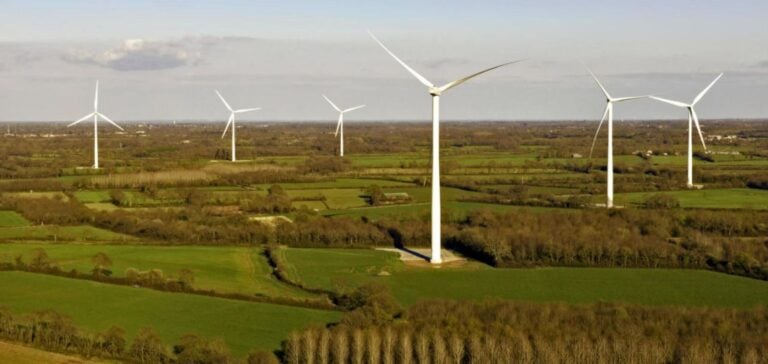In Nouvelle-Aquitaine, the Lavausseau wind farm, located in the municipality of Boivre-la-Vallée, benefits from structured funding for an installed capacity of 18.9 MW. The estimated annual production of 43 GWh will meet the electricity needs of 9,500 households, representing approximately 19.3% of the residential consumption of the Haut-Poitou Community of Municipalities.
This project is part of a regional strategy to strengthen renewable energy infrastructure. Initiated in 2015 with support from local authorities, the Lavausseau wind farm contributes to the goals of the Néo Terra regional roadmap, which aims for 100% renewable energy by 2050. Construction is set to begin in 2025, with commissioning expected in spring 2026.
A project integrated into a regional vision
The Lavausseau wind farm will be complemented by the nearby La Plaine des Moulins project, located in Jazeneuil. Together, these two farms will represent a combined capacity of 36.9 MW, bolstering the contribution of Nouvelle-Aquitaine, which already hosts 8.4% of the wind power connected in France.
By mobilizing local resources and cooperating with local authorities, this project illustrates the central role of regions in the energy transition.
Structured financing to address energy challenges
The Lavausseau project is part of a broader portfolio of ten onshore wind farms, representing a total capacity of 162 MW. This portfolio, financed to the tune of €293 million, mobilizes €241 million in senior debt through a collaboration between VALOREM, Bpifrance, and Crédit Agricole Transitions & Energies, with support from regional Crédit Agricole banks and LCL.
The financial approach relies on structured tools such as Power Purchase Agreements (PPAs), ensuring project revenue stability while meeting the needs of communities and businesses in a competitive economic framework.
Political and economic perspectives
The Lavausseau project reflects the commitment of public and private actors to the French energy transition. The climate priorities of the European Union, combined with national policies, encourage the development of such projects.
By strengthening the regional energy network, these infrastructures also contribute to national energy sovereignty and the reduction of greenhouse gas emissions. Investments in this sector not only support environmental objectives but also generate local economic benefits through job creation and territorial development.






















